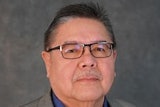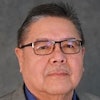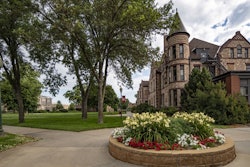At the Pine Ridge Indian Reservation in South Dakota, a group of college entrepreneurs are preparing to enter the global market by launching an American Indian news service — and without ever having to step foot off the reservation.
“You don’t need to leave the reservation to have global or regional impact because of the technology,” says Glorianna Cordova, a founding member of the new Red Wire news service. Cordova, who along with her four business partners, attends Oglala Lakota College in Pine Ridge, where she is studying digital video and new media production.
If they are successful in executing their business plan, Red Wire will provide subscribers from around the world an Internet-based source of news by and about American Indians. After decades of being defined by the mainstream media’s view of what is news in Indian Country, Cordova and her classmates are convinced they have found a niche by adding a Native perspective.
The reservation-based business is just an example of the role that the American Indian Higher Education Consortium says tribal colleges can play in helping to develop local Native economy.
The business plan created by Cordova and her team — who range in age from 22 to 60 — would probably not have been possible years ago. One of the poorest regions in the nation, unemployment rates at Pine Ridge have topped 80 percent. The reservation’s rural location does little for their casino business. And past efforts by the federal government to create a sustainable economy have never come to fruition. Even after a highly publicized visit from then-President Bill Clinton in 1999, in which he vowed to help find new sources of economic development for the tribe, the status quo remains unchanged.
Seven years ago, an AIHEC report concluded that tribal colleges could better serve their students by offering solid programs in economic development. Sitting Bull College in Fort Yates, N.D., has seized upon that mission, and was named last year to Fortune Small Business magazine’s list of “10 Cool Colleges for Entrepreneurs.”
Kathy Aplan, who is Cheyenne River Sioux and director of the television program at OLC, says the Red Wire business plan has the potential to be a legitimate success. “I felt that the project is very viable, with proper training and education in the various areas they need to incorporate to be able to make and maintain this business. I feel it could be very successful.”
The plan was well received at the American Indians in Higher Education’s annual student conference held in March in Rapid City, S.D. Judges from local financial institutions awarded Cordova and her group second place in a competition for the most innovative business plan. Members of the group also took top honors in individual short film and other communications categories.
“I think the strongest element of their business plan is the very fact that they are using cutting edge technology to do their Native news from their perspective, their voice,” Aplan says. “We have a lot of people coming on Pine Ridge doing documentaries. Filmmakers come on doing jobs that our own people could be doing. Our people can take the latest technology and capture the stories, rather than having someone from the outside do it.”
OLC has been able to make a dedicated effort to bring more of that cutting-edge technology into the classroom, especially as prices continue to drop. Aplan says that brings the prospect of creating a reservation-based business such as Red Wire closer to reality.
Aplan says the college is eager to seize upon potential economic ventures. “Tourism is the second-largest industry in the state of South Dakota, and many of the tourists who feel Pine Ridge is a must-see on their vacation stop are international visitors,” she says. “Currently, Oglala Lakota College’s TV production program and GIS lab are working together on a Lakota Land Project that will use an interactive, Web-based map to record not only the GPS points of various locations but make video vignettes of historic and tourism sites and help preserve Lakota language, culture and history.”
Cordova, who has lived on and off the reservation, understands that American Indians have historically had to leave the reservation in order to move up the socioeconomic ladder. “We need to be able to build from within, entrepreneurship is critical to that,” she says. “The dominant society does not perceive us to be creative or resourceful. But by stimulating entrepreneurship you will start seeing the talent.”
–Mark Anthony Rolo
There are currently 0 comments on this story.
Click here to post a comment.
© Copyright 2005 by DiverseEducation.com















